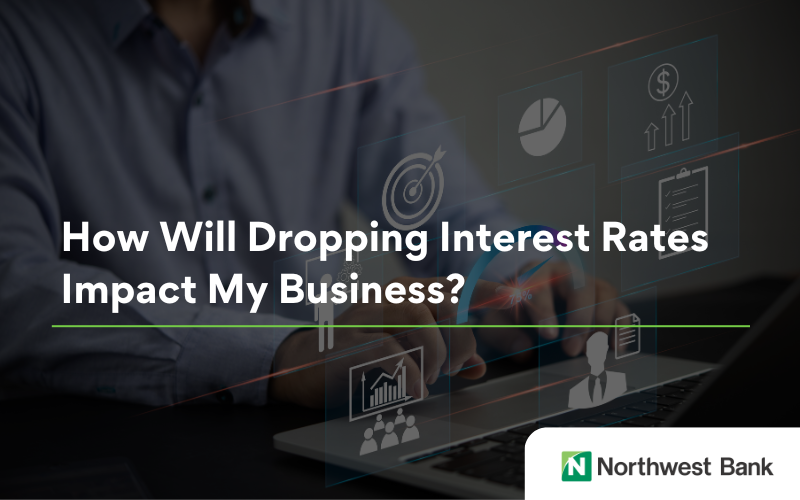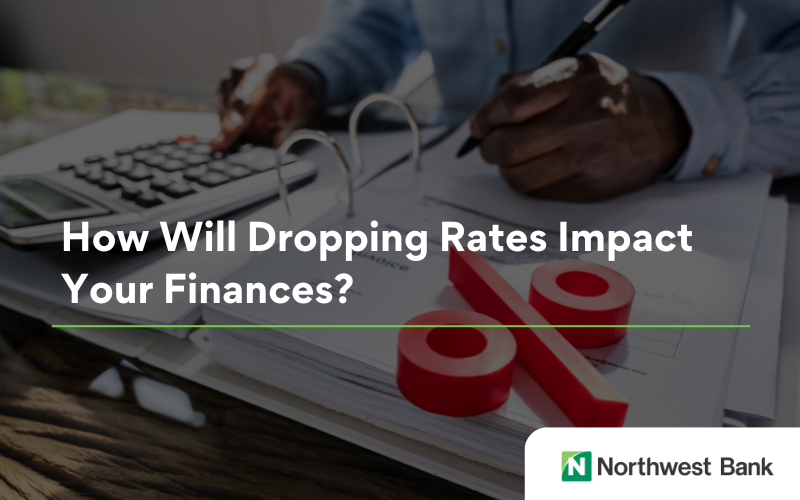What Does Debt Financing Look Like in a Potential Downturn
Corporate Debt in Uncertain Times: Balancing Growth and Risk
Corporate borrowers face continued uncertainty in 2024 — and the choppy waters require extra scrutiny from those considering taking on debt. The Federal Reserve recently announced that it is holding interest rates steady until certain inflation is under control. However, the central bank did note that rate cuts were in the works for later in the year.
“The question is ‘Now what?’” says Don Nicholson, Northwest Bank’s Chief Investment Officer. “When is the Fed going to lower rates? Are they going to lower rates? And when are they going to stop? There are a lot of considerations for companies navigating this environment.”
In addition, economists continue to debate the likelihood of an economic downturn. And even though the country technically avoided a recession, Nicholson notes that consumers still feel the squeeze of higher prices.
This mixed bag of economic news creates a challenging climate for corporate borrowers as they determine if and when they should take on debt. “Anytime you're borrowing and investing in a period of uncertainty, it's really about risk management,” Nicholson says.
While it’s impossible to predict the future, corporate borrowers can make smarter decisions about their debt and interest rate risk by asking the following key questions:
- Are you borrowing for growth or survival?
The answer to this question informs not only how much debt you should take on but also whether you should take on additional debt at a potentially higher interest rate than any debt you’ve accrued over the past few years.
Customers are using debt to invest in technology that improves productivity. “These investments are often in response to the labor shortage,” Nicholson says. “Companies are looking for technology or equipment that enables them to operate and grow the business with fewer employees.”
In fact, 75% of employers in the fourth quarter of last year reported having “some” or “a lot of difficulty” finding talent. The initiatives do require extensive capital and may spur near-term borrowing. But if the capital enables growth — beyond survival — then it may be a smart one.
- What are the prospects for your industry?
The U.S. GDP grew 3.3% last quarter; however, some economists anticipate that growth to slow in 2024. “There’s going to be some industry-specific issues that some companies will encounter if the economy slows,” Nicholson says. If you’re evaluating whether to take on additional debt, it’s important to consider how an economic downturn may impact your industry or sector.
For instance, a decline in consumer spending could impact high-end restaurants, luxury brands or other sectors that rely more on discretionary funds. Legislation passed last year boosted manufacturing (and spurred record infrastructure investment), but the industry still faces labor shortages that threaten its growth. Every industry is going to face headwinds; still, there are some primed to thrive during periods of economic volatility. Understanding the challenges specific to your industry can help determine whether taking on debt can mitigate some of those risks.
- Can you leverage your credit for more competitive terms?
Interest rates in the two- and three-percent range may not be obtainable in the near term. However, demand for commercial loans is relatively low. “It’s been getting more competitive,” Nicholson says. “If you’re having discussions with your banking team, that may bode well, especially if you have good credit and the company is in good financial condition.”
Explore what your commercial banking partner offers and whether the rates and potential terms available make borrowing now a better — or more capital-efficient — move than using existing capital or cash flow to fund any expansion projects.
- Would it pay to wait?
As previously noted, the Fed has been hawkish about wanting to lower rates. In December, the Fed indicated that there may be three interest rate cuts this year. It held rates steady in January, but Nicholson expects rates may decrease later this spring or summer. With that in mind, corporate borrowers should consider whether they can delay borrowing until rates potentially drop. This is especially true if the current company financials or forecasts don’t equate to more competitive loan terms, as noted above. If you don’t necessarily need to borrow in the immediate future, holding off until interest rates dip could provide significant savings.
You must also consider what you’re borrowing the money for and how inflation may affect the price. “It’s a judgment call with rates and prices,” Nicholson says. “If you borrow money today, you may be able to buy what you need right now. If you wait, rates may dip, but prices may continue to rise.” He notes that the decision often rests on how much uncertainty a company is willing to undertake.
- Can you get creative?
Finally, if you’re pursuing corporate debt in the current rate environment, collaborate with your commercial banking partner to find creative solutions that reduce interest rate risk over the long term. For example, you might consider a variable rate that could decline in the coming months. “A variable rate comes with a little more risk, but you can use it in an intelligent way,” Nicholson says.
Perhaps you don’t need to borrow all of the money for a capital project up front and instead, can space out your credit needs or partially use cash. This is another area where a banking partner can help you fit the pieces of your corporate debt puzzle together, creating a solution that aligns with your needs and addresses your specific risks.
The volatility of the current economy makes it challenging to know which debt path to take. “The key is to make the best decision with the available information, with the understanding that risk may have a bigger impact in a weak economic environment,” Nicholson says. Ask the hard questions and work with your banking partner to create a strategy for navigating the uncertainty without introducing even more. Find a Northwest expert near you to learn more about navigating corporate debt or to discuss your business needs.



